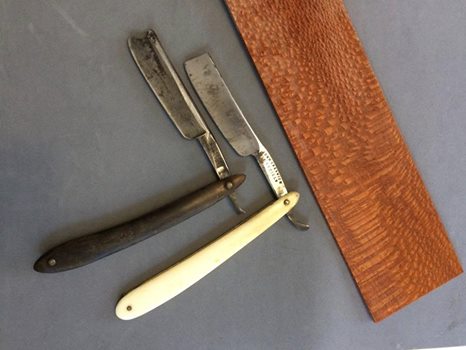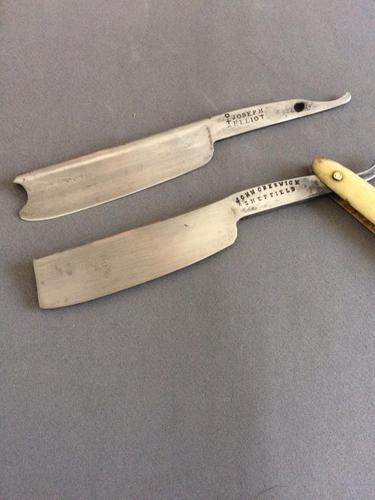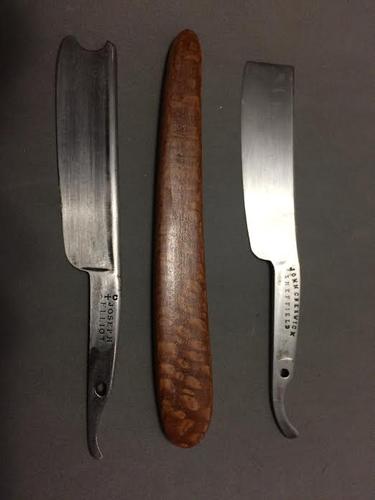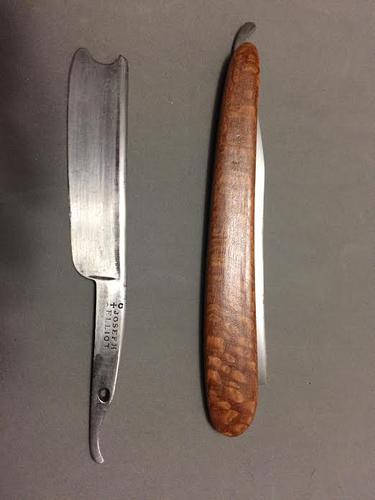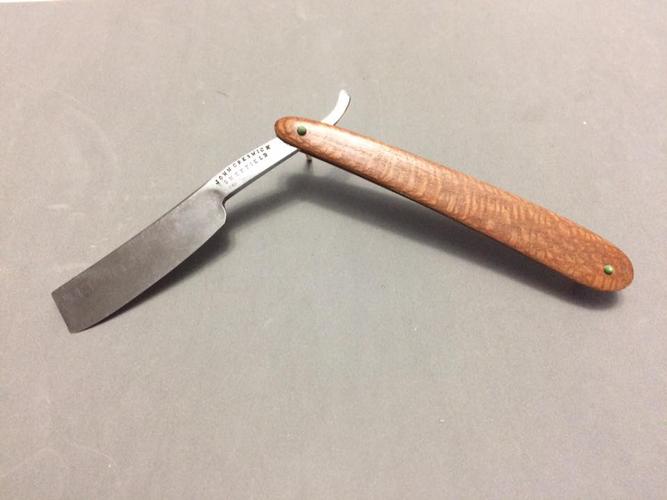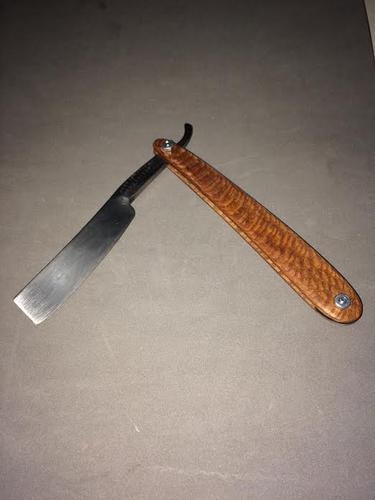Results 1 to 10 of 13
Thread: Pinnless scales?
-
04-19-2017, 12:32 AM #1Junior Member

- Join Date
- Mar 2017
- Location
- New Hampshire
- Posts
- 10
Thanked: 0 Pinnless scales?
Pinnless scales?
So I'm restoring 3 straights as my first foray into this hobby. I do have a question about pinning. Do you HAVE to have pins down at the wedge? One set of scales I'm doing are acrylester inlace - (resin basically) I know certain CA when used on plastic will actually slightly melt the plastic in order to form the bond. I was going to use a matching piece of the scales to form the wedge...so my qustion is has anyone not pinned the wedge and just used ca/epoxy creating a pin scale?
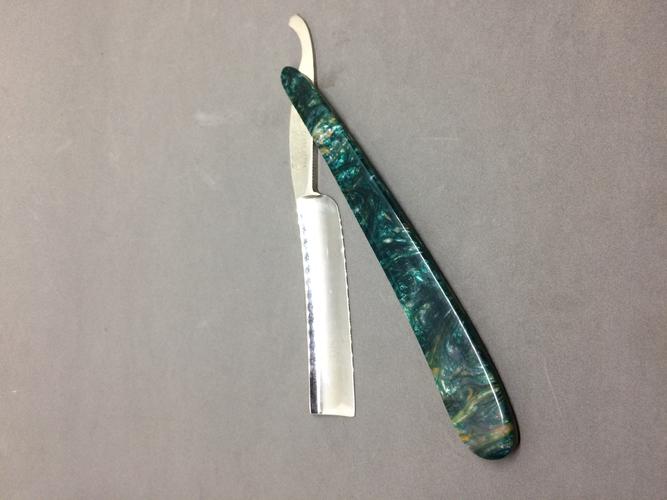
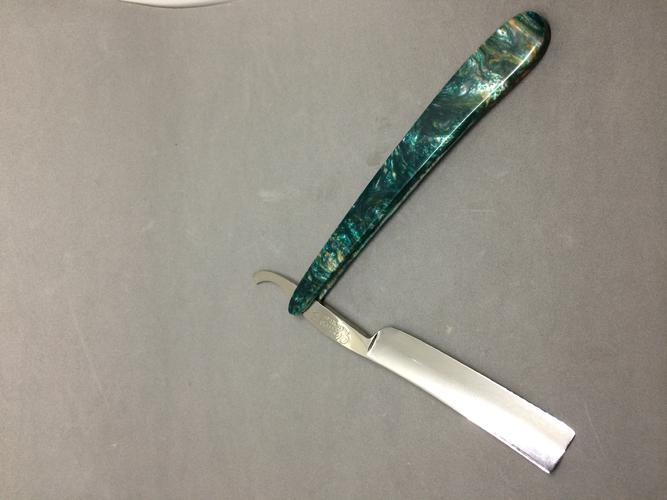
Last edited by ssgmeader; 04-19-2017 at 12:36 AM.
-
04-19-2017, 12:40 AM #2

I can't speak to the glue being used, but some early 20th-century scales I've seen were without pins at the wedge. I also have a small razor re-scaled in wood that is glued together at the wedge, without a pin there.
Striving to be brief, I become obscure. --Horace
-
04-19-2017, 12:41 AM #3

Some of the fancy scales were made with bonded wedge ends. Some of them failed over time and were pinned then. Your choice for some.
~RichardBe yourself; everyone else is already taken.
- Oscar Wilde
-
04-19-2017, 12:48 AM #4
-
The Following User Says Thank You to cudarunner For This Useful Post:
Geezer (04-19-2017)
-
04-19-2017, 01:01 AM #5Junior Member

- Join Date
- Mar 2017
- Location
- New Hampshire
- Posts
- 10
Thanked: 0
-
04-19-2017, 02:04 AM #6

Very nice! I love that wood.
-
04-19-2017, 02:11 AM #7

I believe acrylester is mostly acrylic(could be wrong). If this is the case you should be able to bond it chemically with a solvent like acetone. This would be stronger then any glue or epoxy bond.
B.J.
-
04-19-2017, 02:45 AM #8The First Cut is the Deepest!


- Join Date
- Feb 2010
- Location
- Upper Middle Slobovia NY
- Posts
- 2,736
Thanked: 480
I own a few of the bonded celluloid scales, and they work just fine.... until they dont. I have NEVER pinned them again after they went loose, I have always re-glued them.
That bond lasted 80 years, its nothing to be laughed at.
-
04-19-2017, 02:51 AM #9Junior Member

- Join Date
- Mar 2017
- Location
- New Hampshire
- Posts
- 10
Thanked: 0
-
04-19-2017, 04:04 PM #10

This is what I got in from my friend in the Inlace Acrylester business:
If it were me I think I would use epoxy.
Ca works well for a lot of things, but it tends to lack flexibility.
For pens and stuff that doesn’t require a lot of effort to keep the plastic and metal together it works fine, is easy, and neat.
For a superior bond I would use and epoxy though. It will have a stronger bond and the glue won’t be as brittle.
F
I hope this is of some help.Our house is as Neil left it- an Aladdins cave of 'stuff'.
Kim X


 14Likes
14Likes LinkBack URL
LinkBack URL About LinkBacks
About LinkBacks






 Reply With Quote
Reply With Quote



